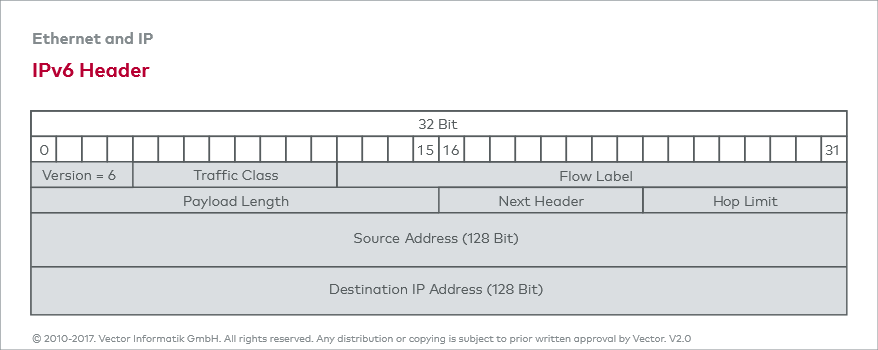IPv6 - Version 6
Background
IPv6 was mainly developed to address the shortage of addresses of IPv4 and to optimize the routing process. Compared to IPv4, the number of fields in the IPv6 header has been reduced from 12 to 8 fields.
Notation of IPv6 addresses
IPv6 addresses are normally represented by grouping two bytes each in hexadecimal format separated by a colon. Four zeros are typically written as only one zero or are completely omitted. Unlike in IPv4, there are no Broadcast addresses in IPv6. A Broadcast is a special Multicast case.
Examples of IPv6 addresses:
- 1080:0:0:0:8:800:200C:417A (unicast address)
- FF01:0:0:0:0:0:0:101 (multicast address)
- 0:0:0:0:0:0:0:1 (loopback address)
Sequential blocks that contain only zeros may be omitted once in IPv6 addresses. Omitted blocks are identified with two colons regardless of how many there are. An IPv6 address can thus have two sequential colons only once.
- 1080::8:800:200C:417A (unicast address)
- FF01::101 (multicast address)
- ::1 (loopback address)
IPv4 in IPv6 addresses
IPv4 addresses can also be implemented in IPv6. A mixed notation is available for this in which a combination of hexadecimal and decimal values is allowed.
- ::13.1.68.3
- ::FFFF:129.144.52.38
Subnet masks
In IPv6 addresses, 64 bits are designated for the network address and 64 bits for the host address, unless otherwise defined by a subnet mask. While the use of subnet masks is possible, they are rarely used due to the sufficiently large amount of address space.

